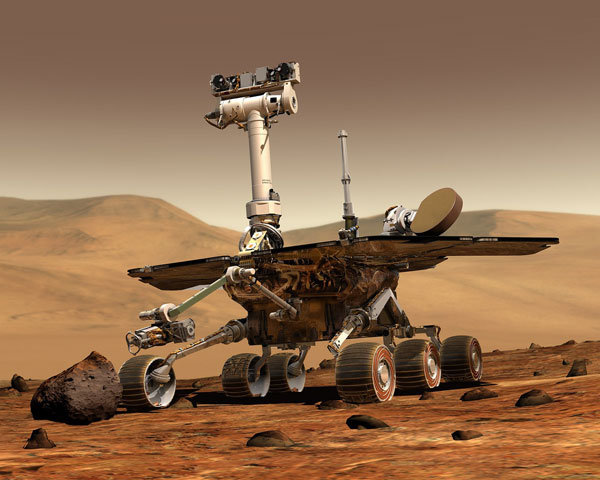Caltech designs shape shifting robots for distant planets

[Space Rover. Credit to Pixabay]
A team of scientists from Caltech and the Jet Propulsion Laboratory (JPL) have designed a robot that can travel to foreign planets.
These mini robots have the ability to roll, fly, float, and swim.
They are referred to as the Multi-Modal Mobility Morphobot, or the M4.
M4 is the creation of Gharib and Alireza Ramezani, assistant professor of Electrical and Computer Engineering at Northeastern University.
"Our aim was to push the boundaries of robot locomotion by designing a system that showcases extraordinary mobility capabilities with a wide range of distinct locomotion modes. The M4 project successfully achieved these objectives," says Ramezani.
Robotic planetary exploration vehicles, such as the wheeled rovers on Mars, are limited to the landscapes they are able to navigate.
NASA's Curiosity rover, for example, has been exploring the Martian surface for eleven years but
the robotic explorer had only driven less than twenty miles (32 kilometers) before experiencing damage to its wheels within the first several months of its mission.
NASA's more recent Mars rover, Perseverance, was sent with a small helicopter companion called Ingenuity.
These vehicles helped navigate and map out routes for the rover, prompting NASA to realize the importance of drones.
One of the key features of the M4 is its ability to repurpose its appendages to wheels, legs, or thrusters.
When M4 needs to stand up on two wheels, two of its four wheels fold up and their inset propellers spin upwards, providing the robot with steady balance.
In the event that the M4 needs to fly, all four wheels fold up, and the propellers lift the robot off the ground.
Joints on the wheel assemblies also allow M4 to execute a walking motion.
The M4 is controlled by artificial intelligence that can determine where the destination is.
Then, it creates the most efficient route, and also decide which method of travel to use.
This will allow the M4 to favorably traverse across the surface of planets or moons.
Furthermore, the M4 team at CAST also sees uses for the Morphobot's technology here on Earth, particularly in the field of emergency services.
One example is the aftermath of a natural disaster, in which M4 is able to fly inside a collapsed building, drive and "walk" around confining obstacles until it locates survivors.
Different animals were the inspiration behind some of M4's designs, such as the Chukar bird, which flaps its wings for balance while walking over hilly landscapes.
Other inspirations were the sea lion which uses their flippers to waddle across land and speed through the water, and the meerkat that stands to reduce appendage redundancy.
Biologists have long studied examples of appendages repurposing themselves within the animal kingdom.
However, engineers have only recently explored this domain of concepts.
The robot has also been tested outdoors and has navigated the terrain of Caltech's campus.
It made a successful run across a bridge over a small stream, before changing shape and flying over the pond.
A recording of its journey was then posted on the internet, clearly announcing the new era of traversal to the world.

- Ian J. Kim / Grade 8

![THE HERALD STUDENT REPORTERS [US]](/assets/images/logo_student_us.png)
![THE HERALD STUDENT REPORTERS [Canada]](/assets/images/logo_student_ca.png)
